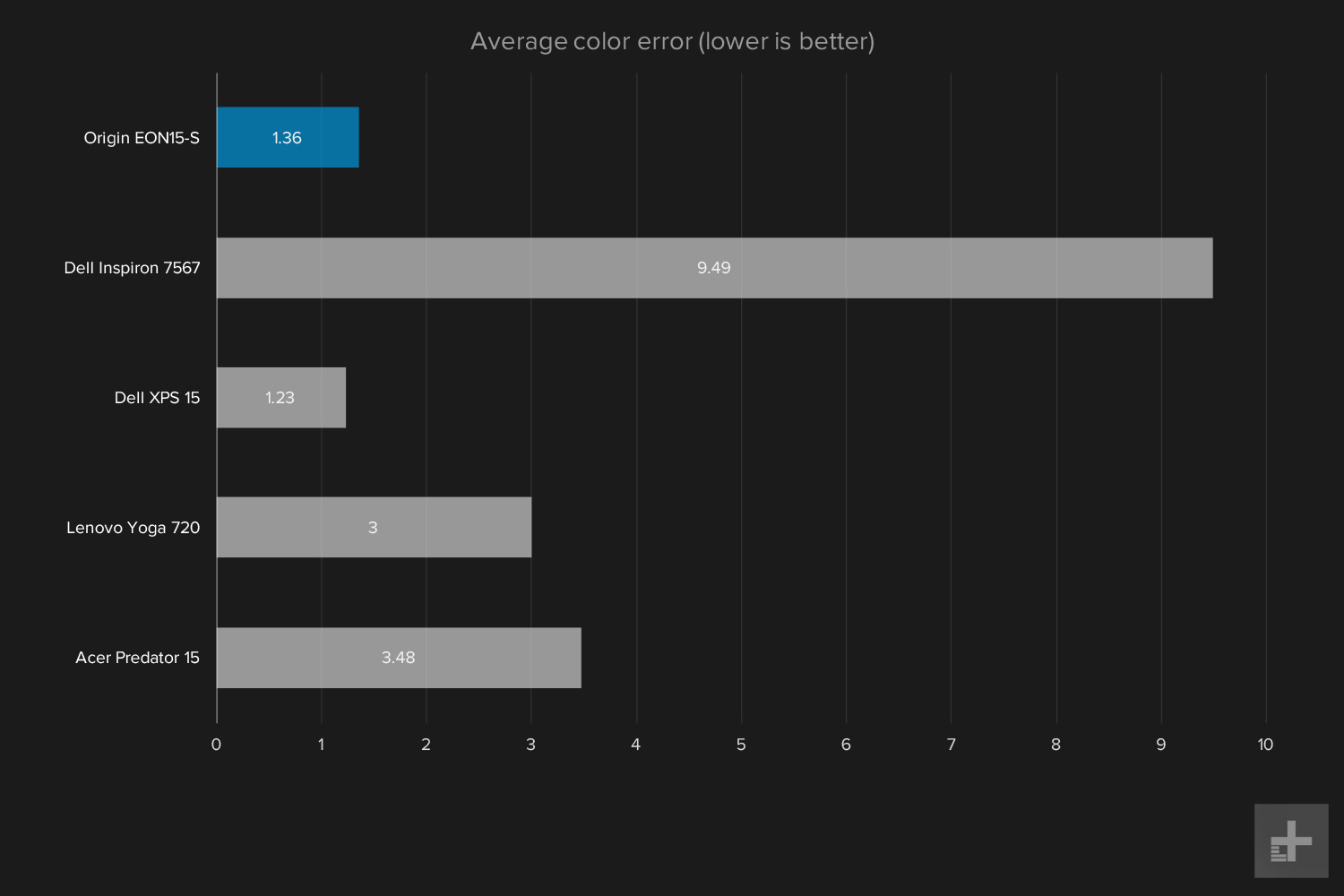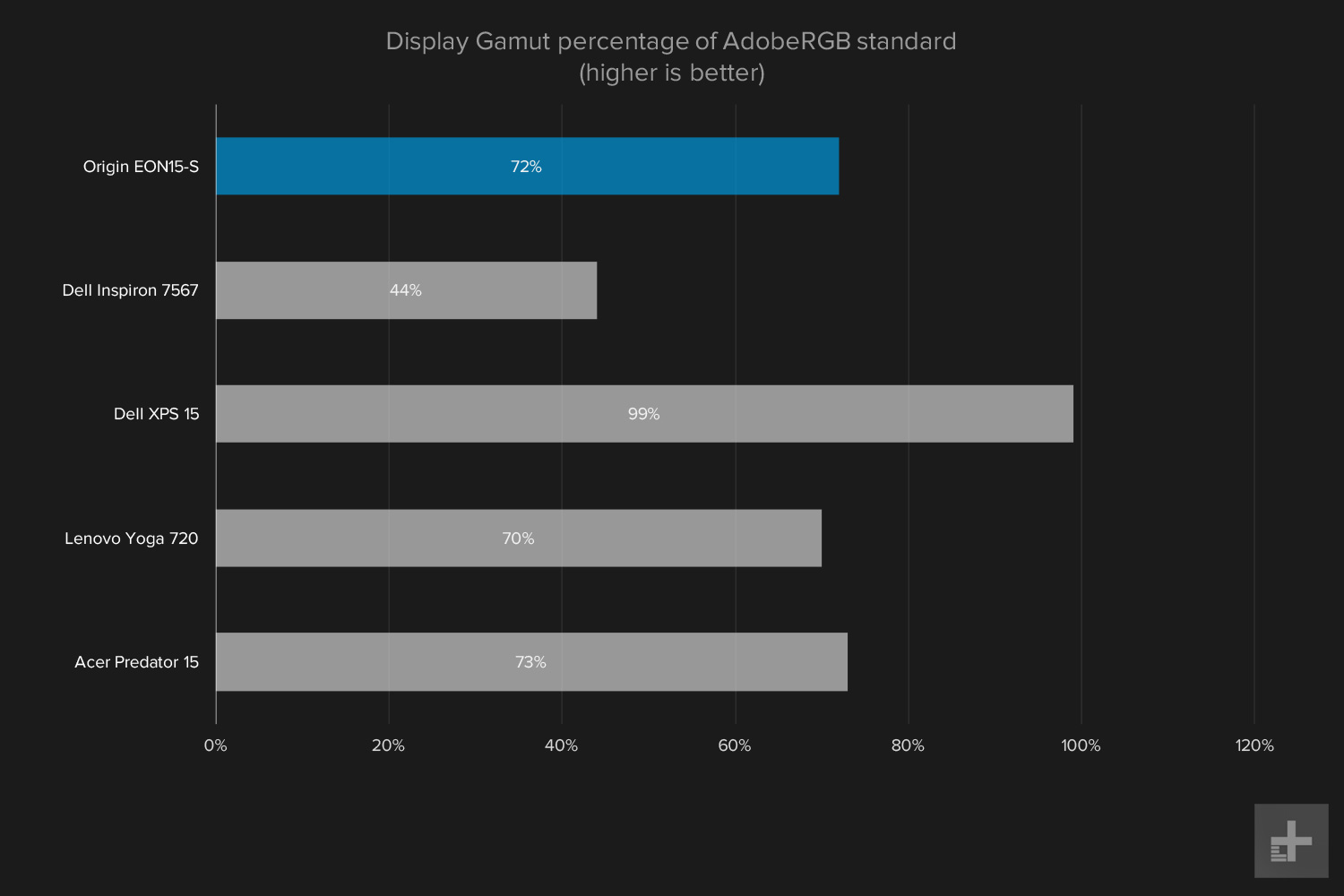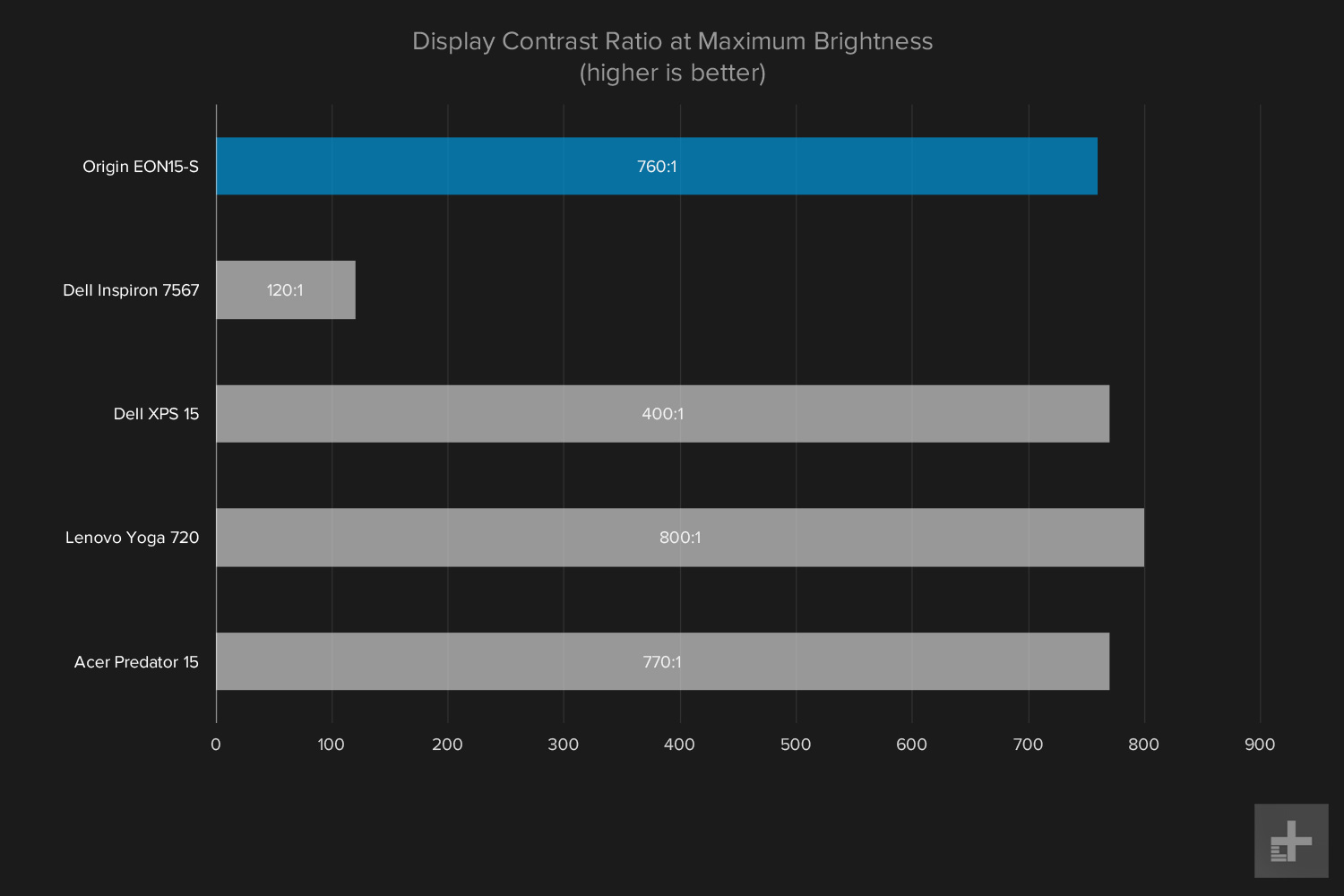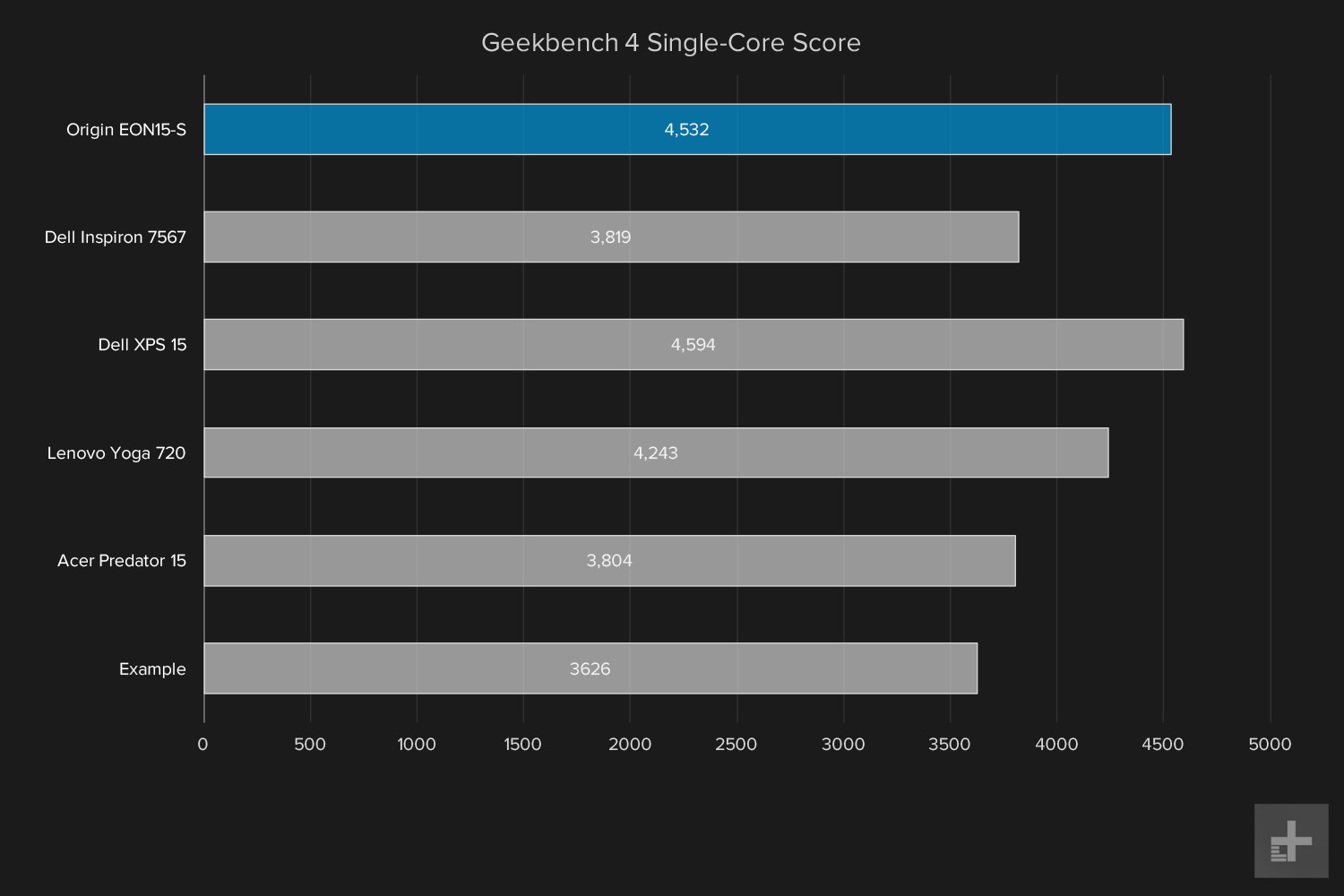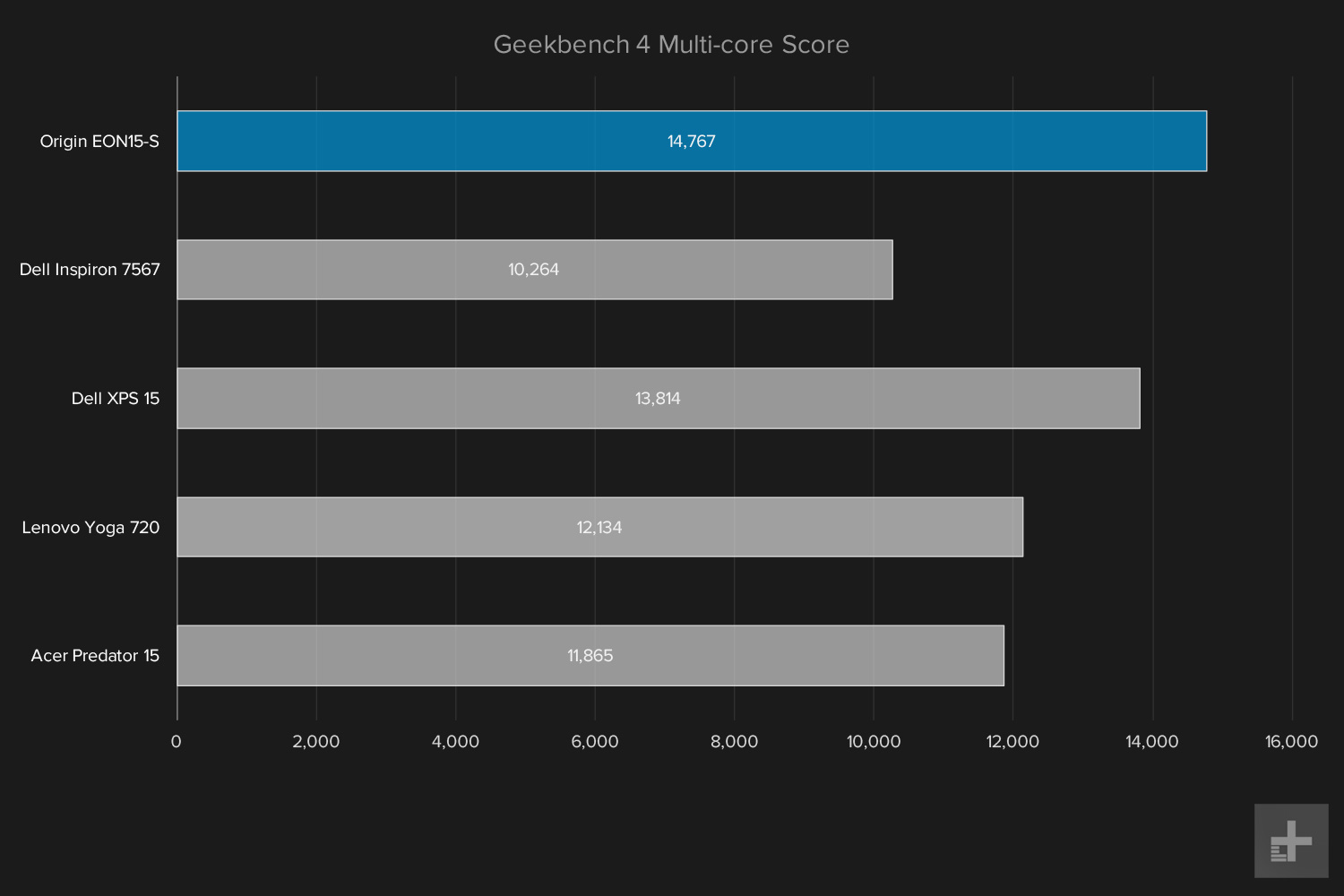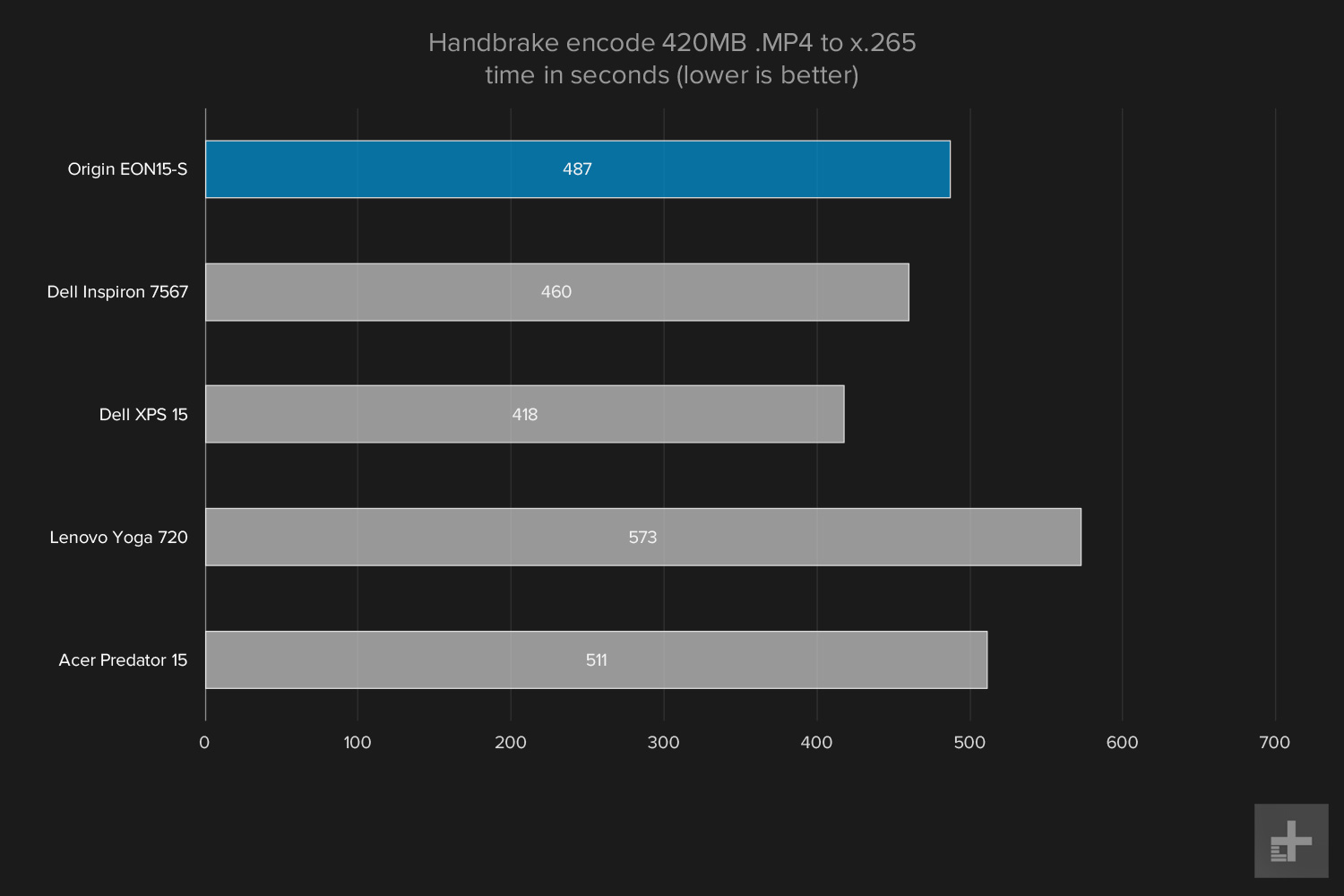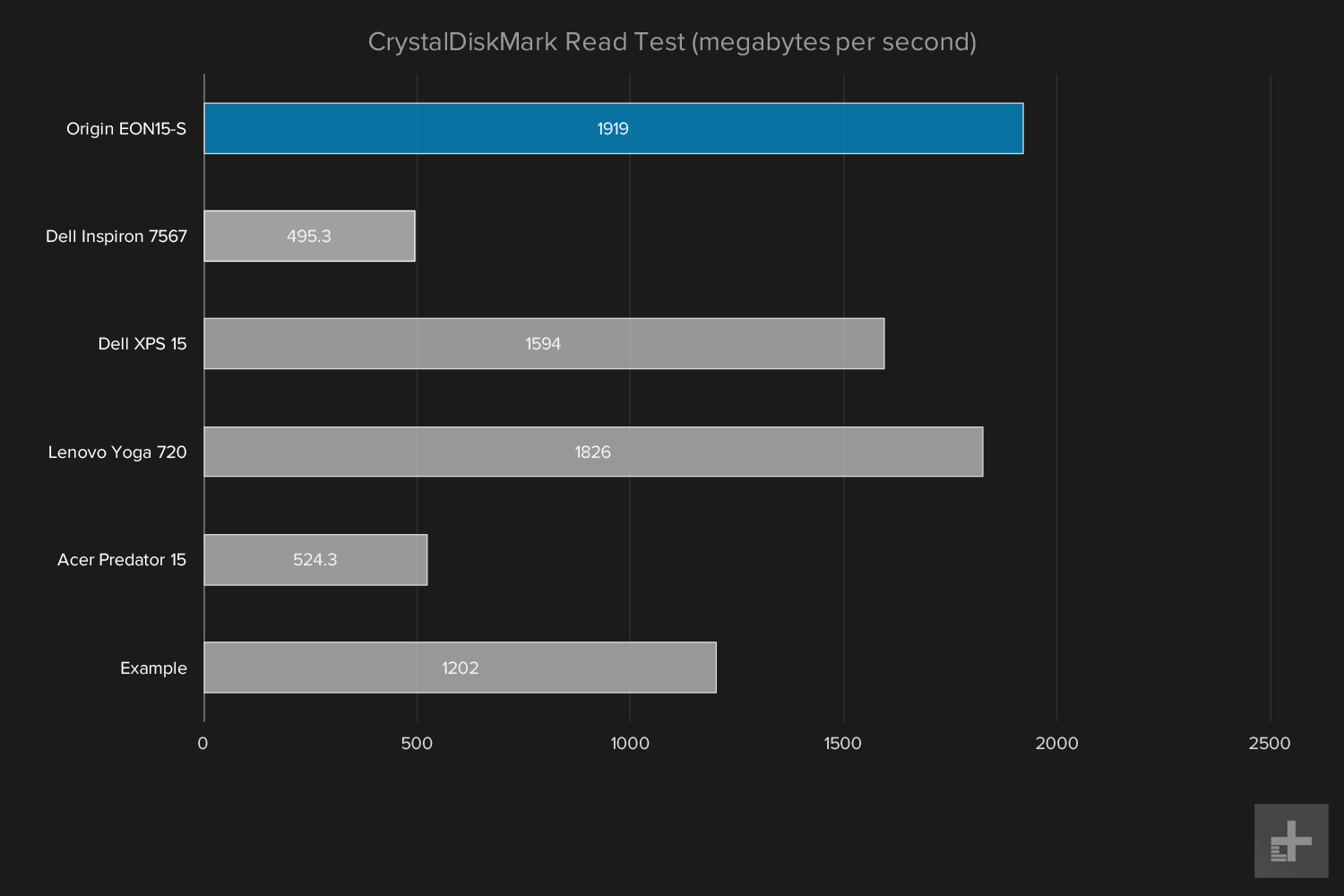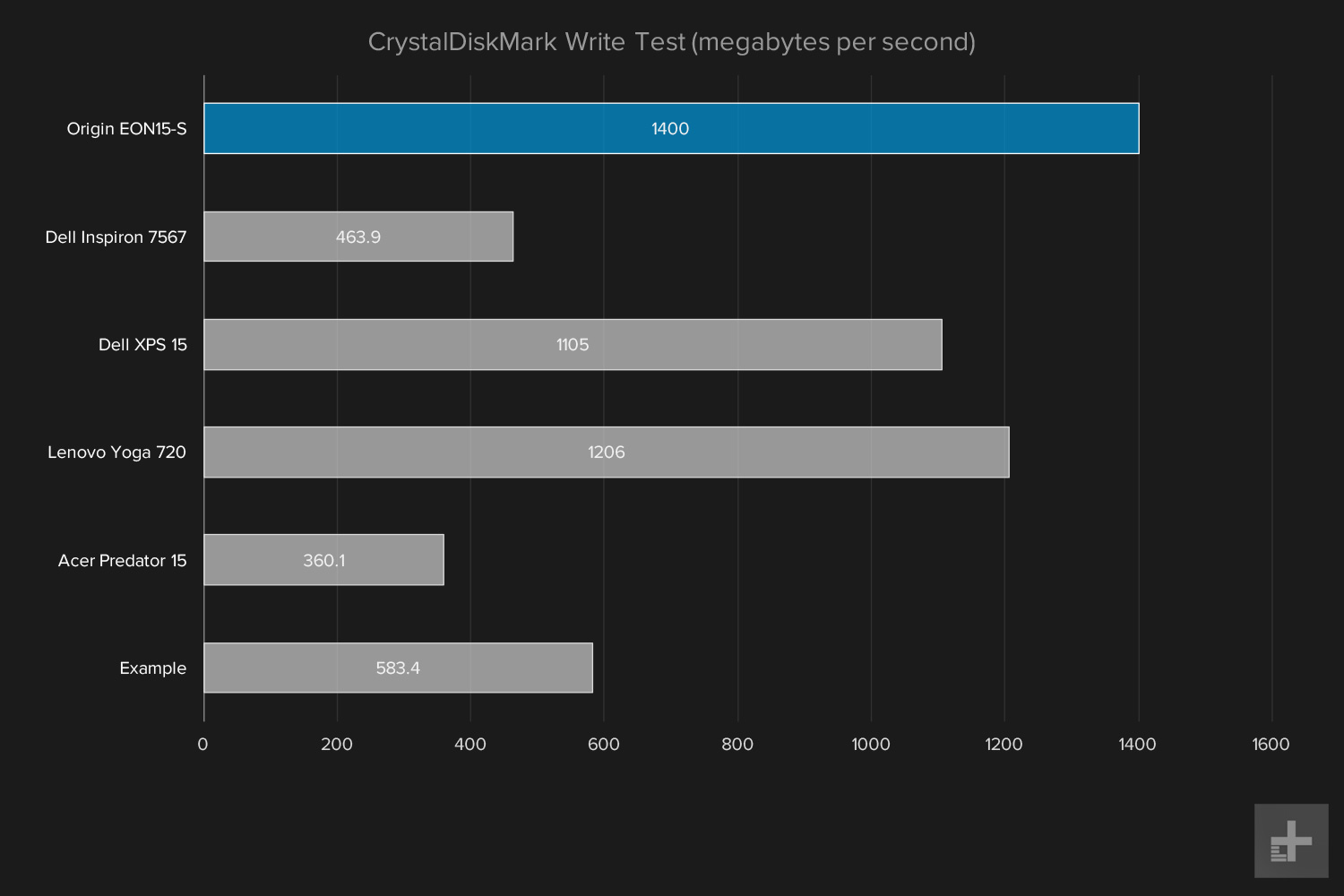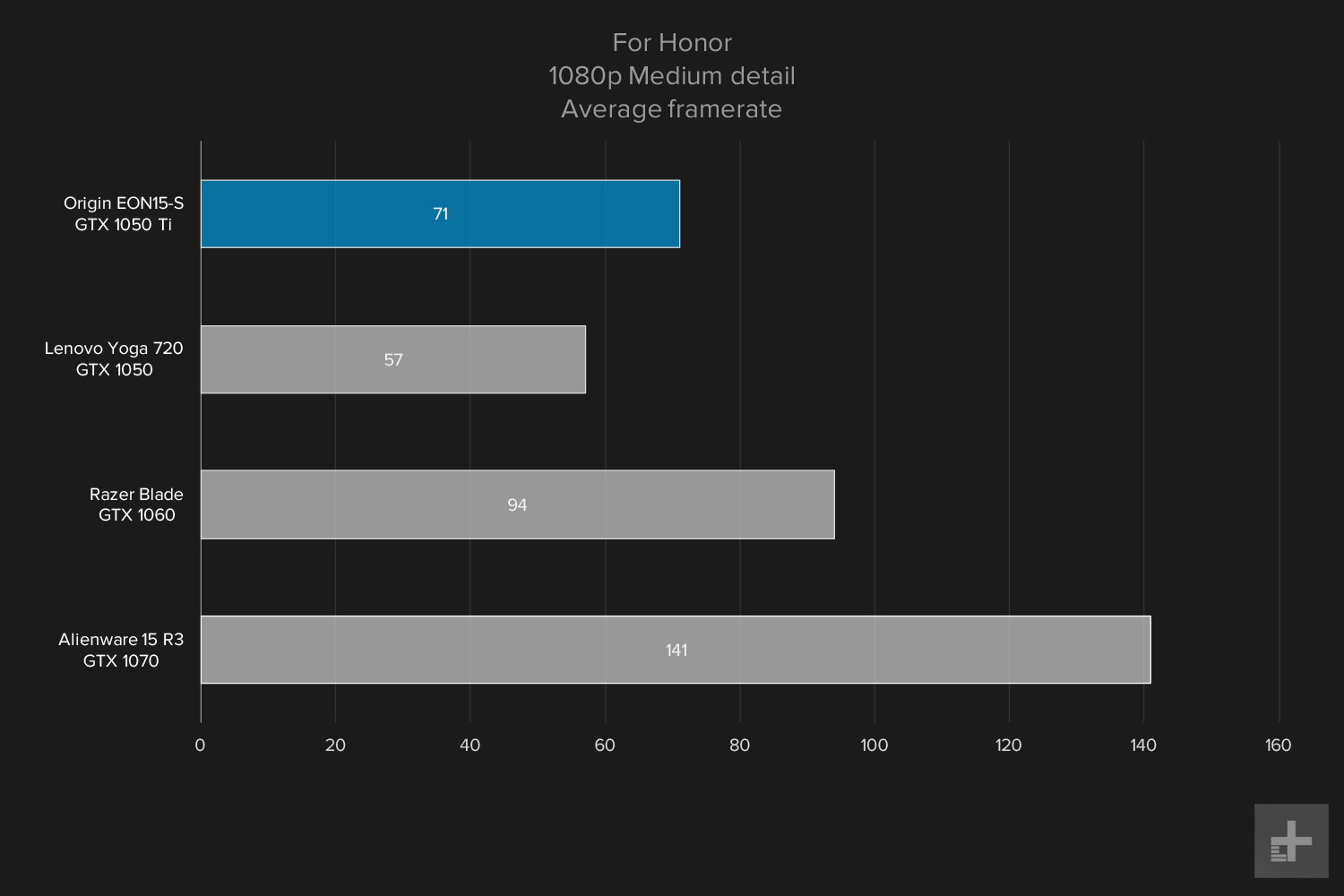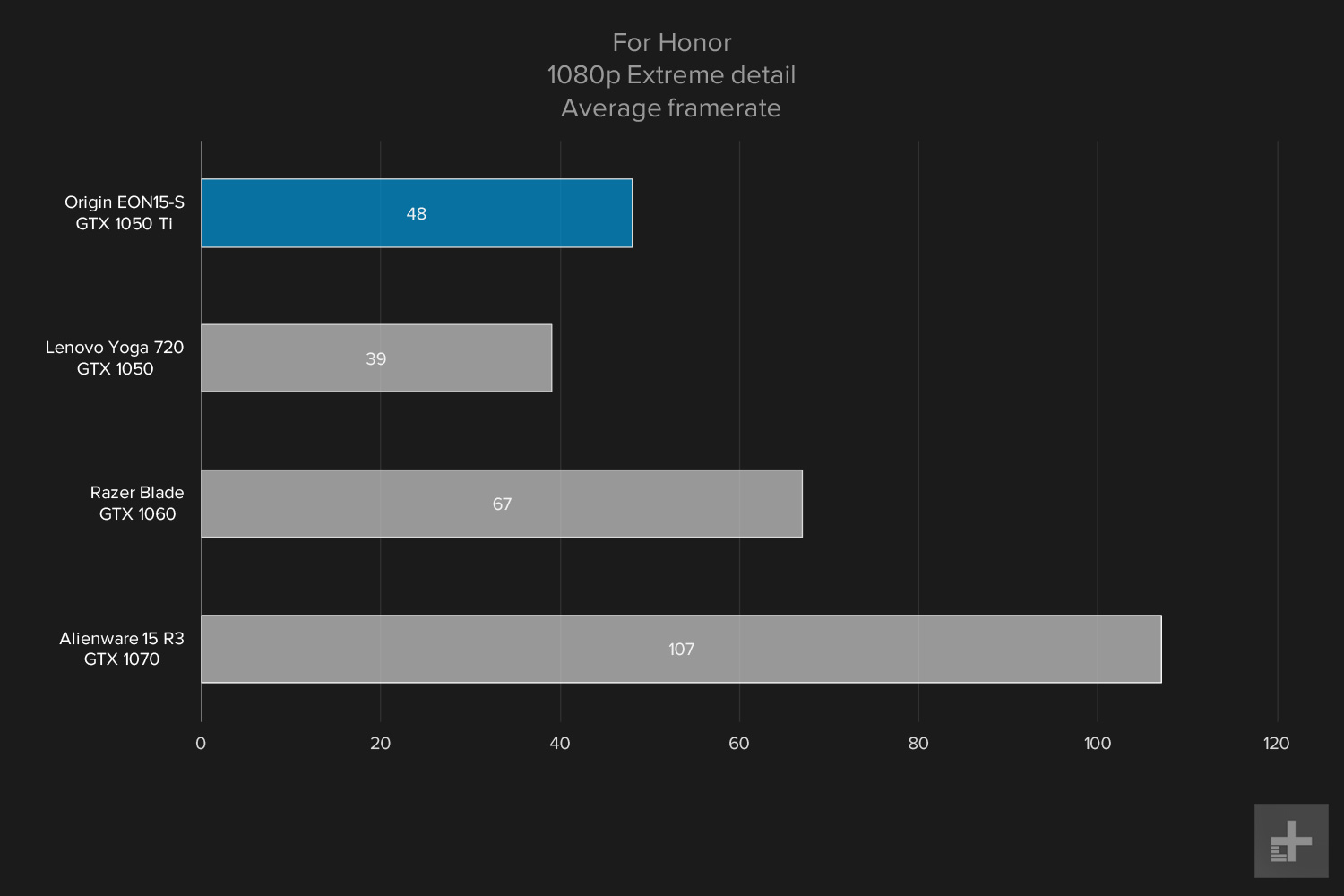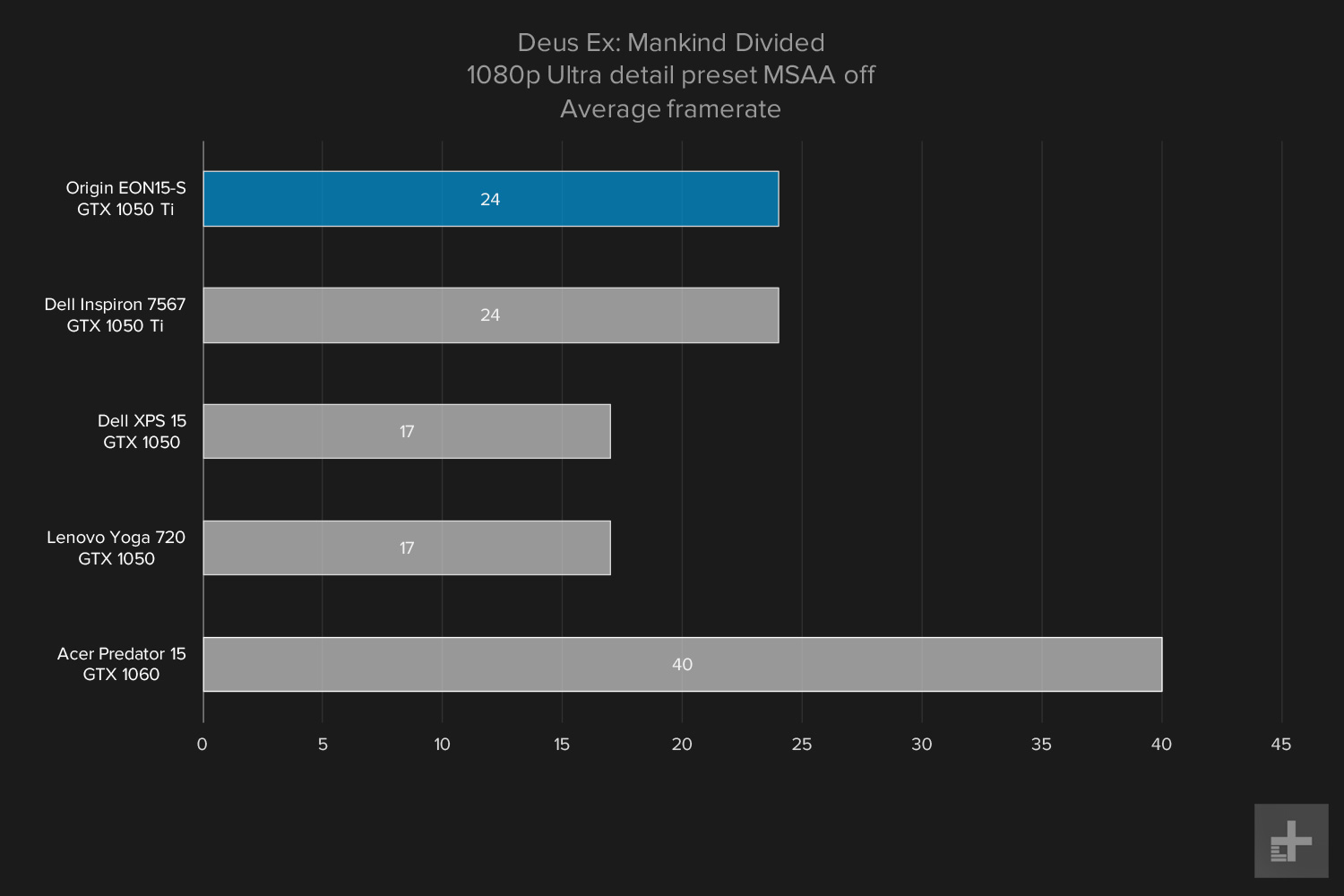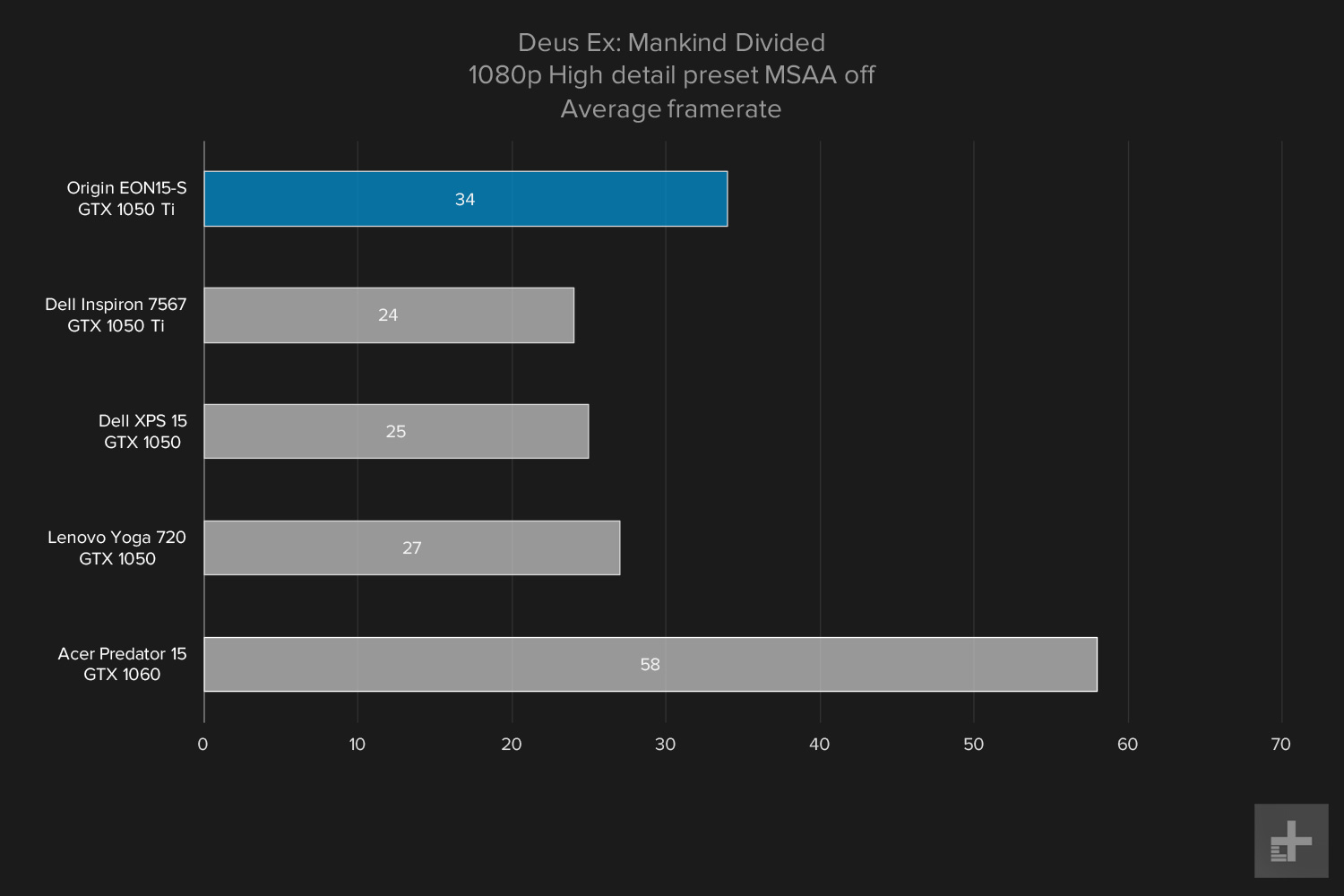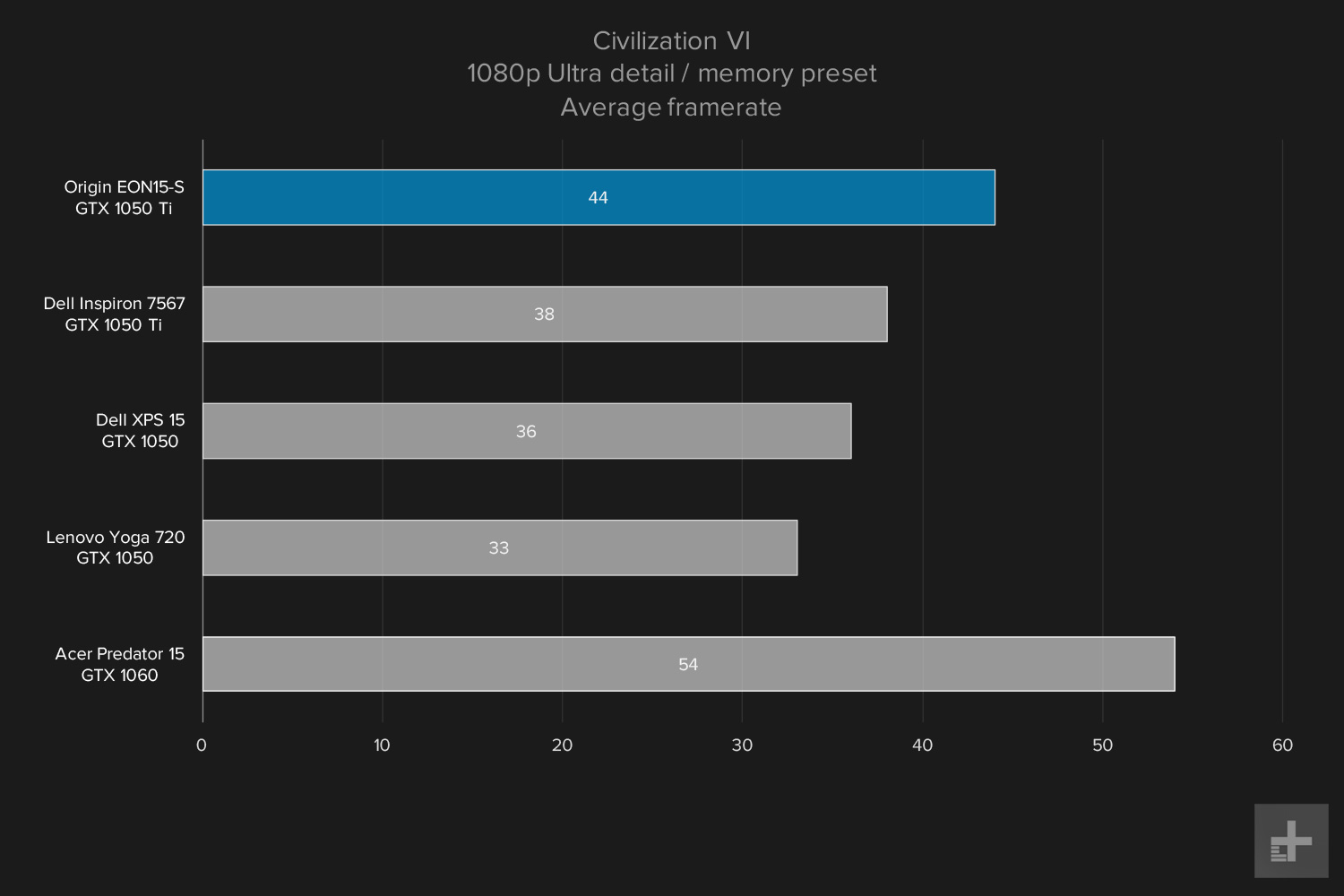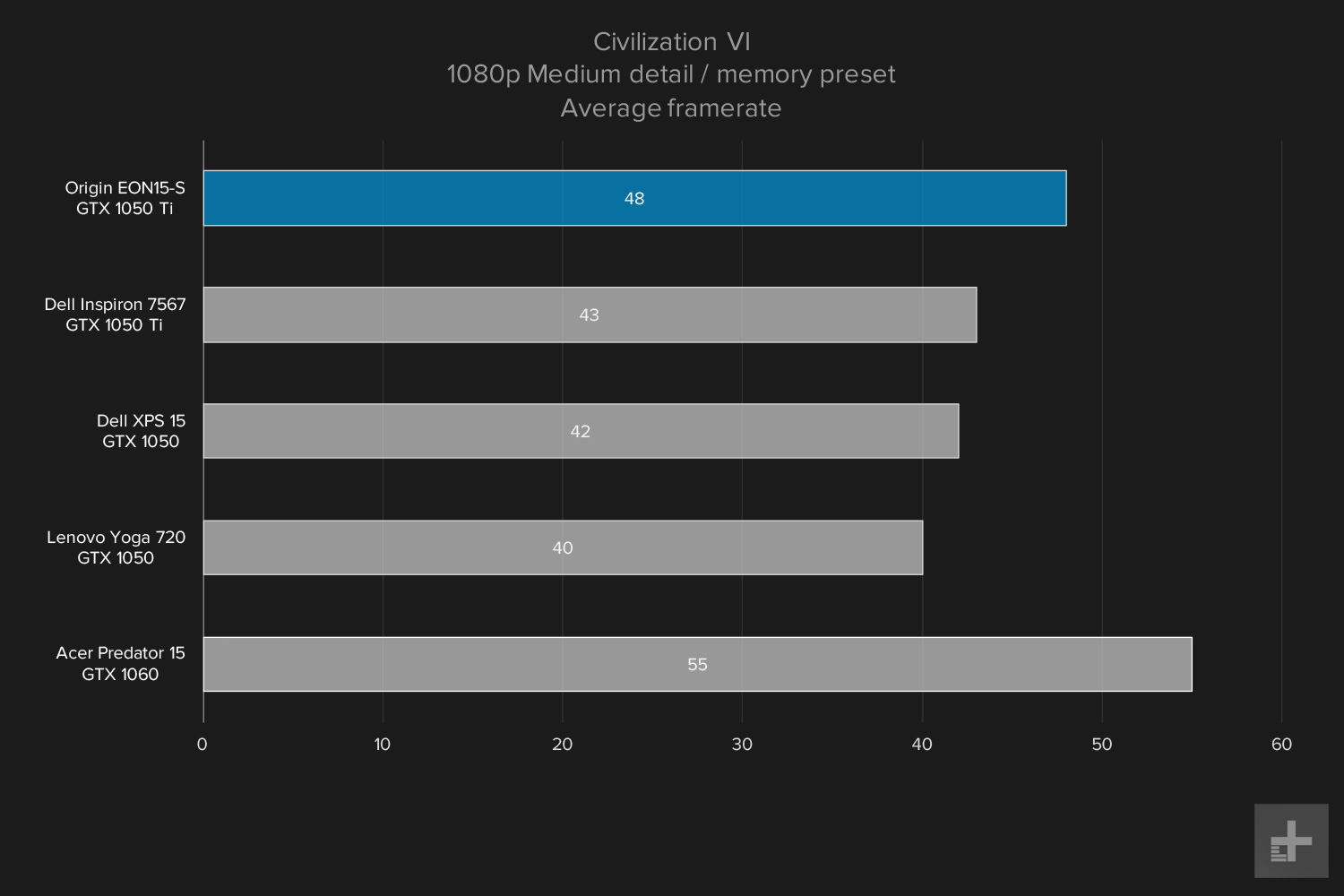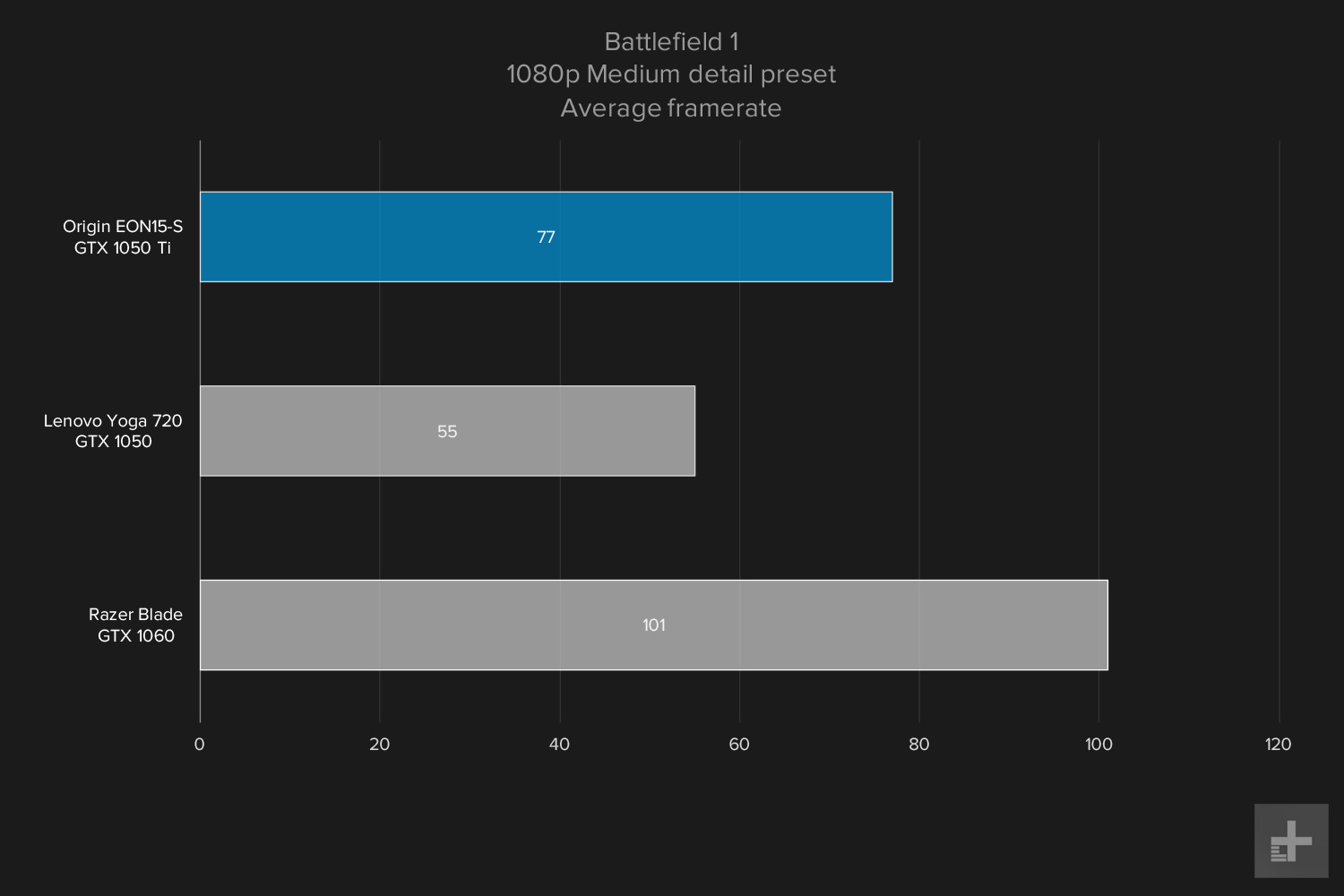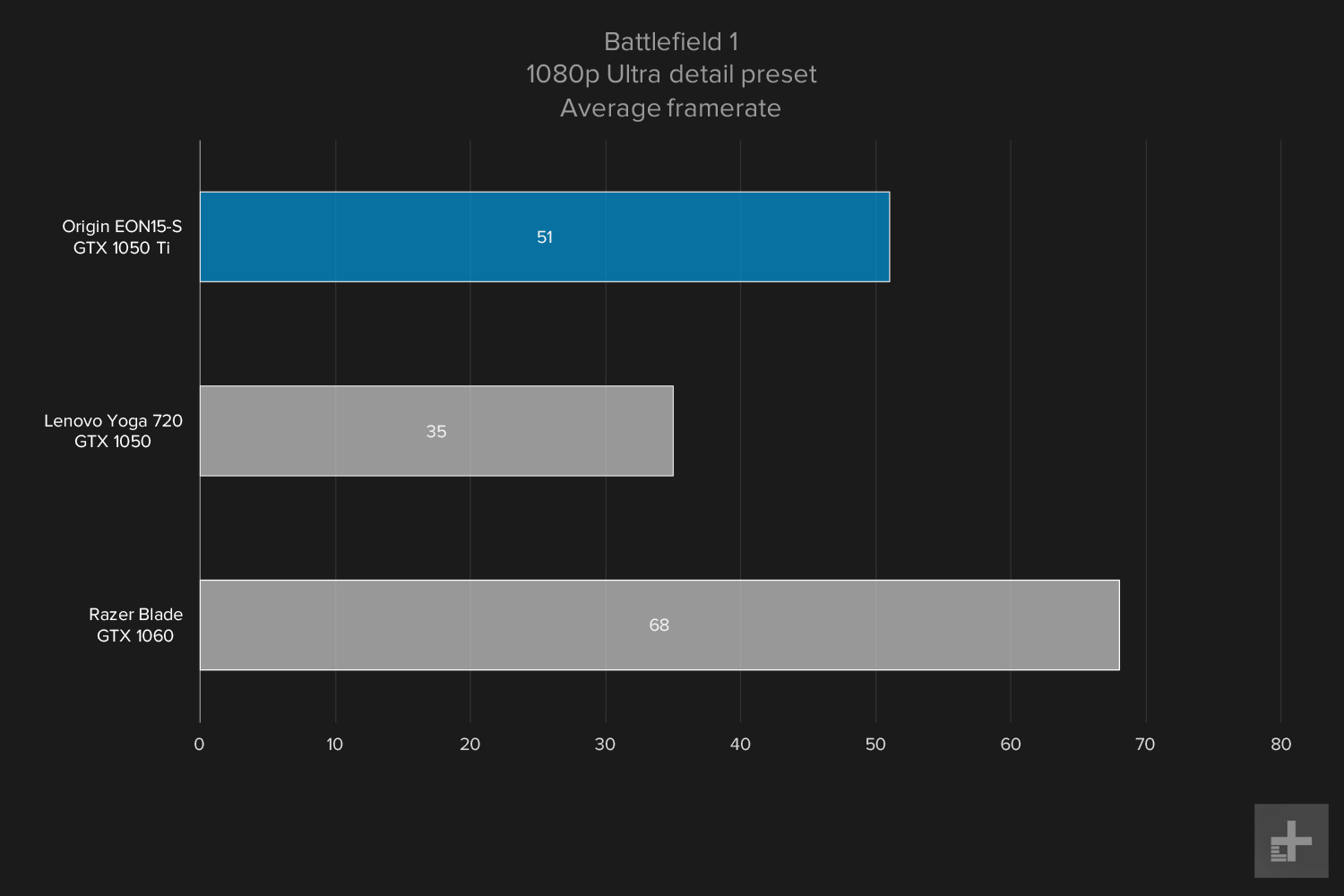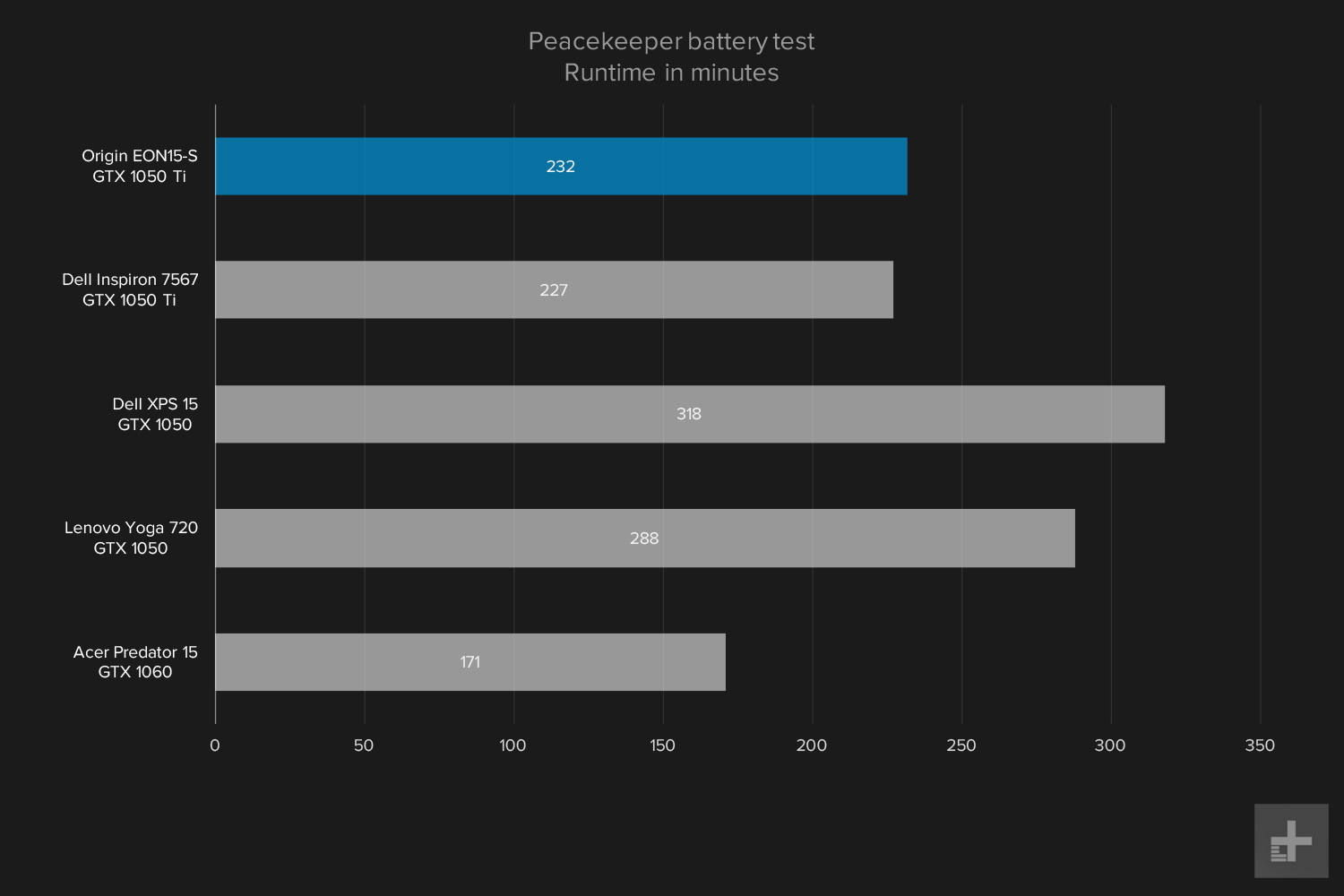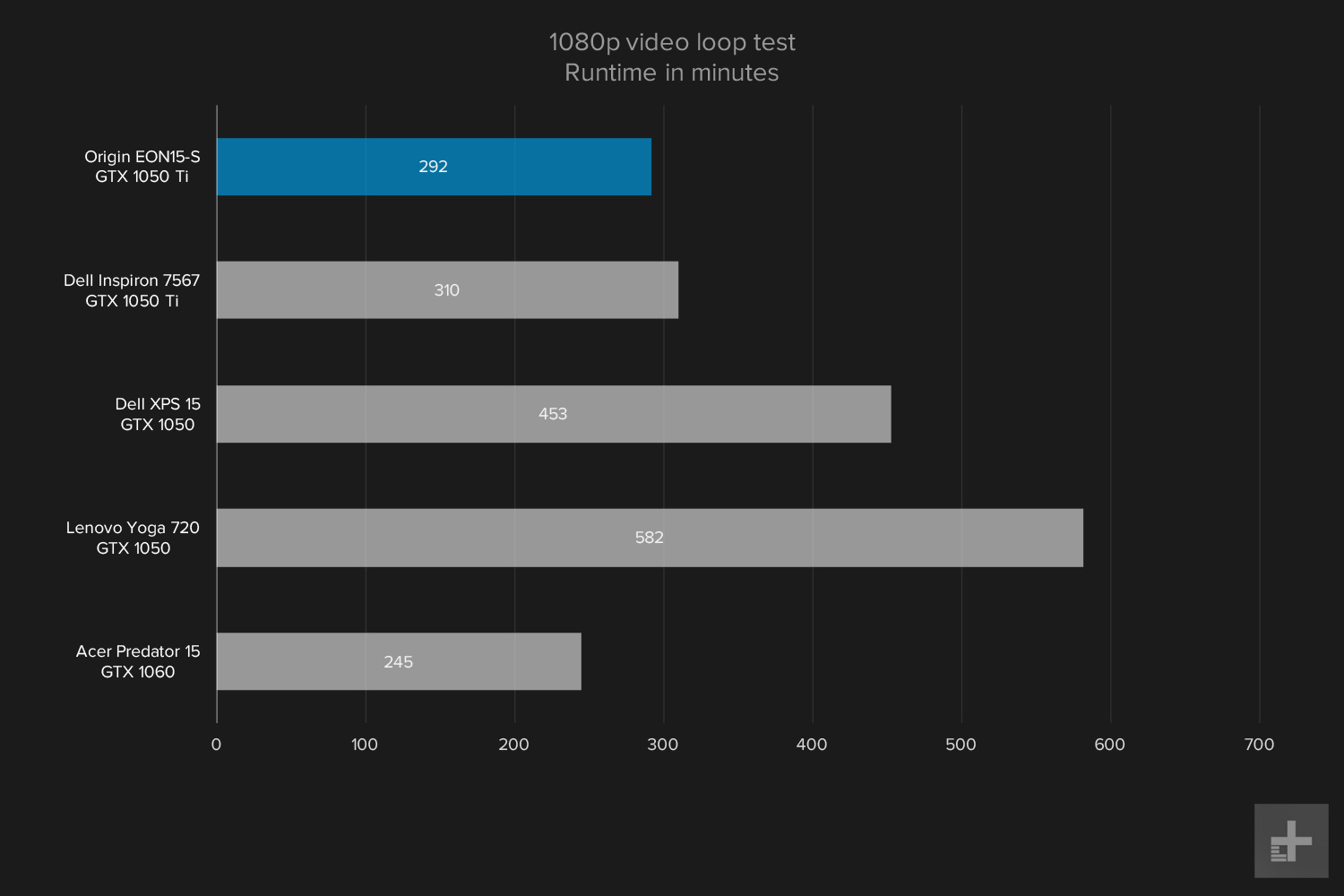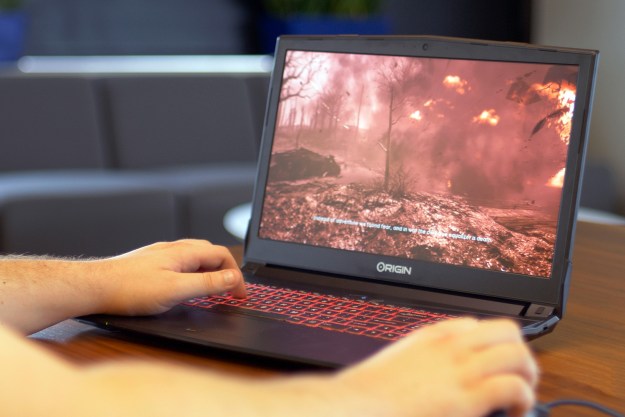
“The normally unique Origin PC misses the mark with its rather generic EON15-S.”
- Nice display
- Acceptable 1080p performance
- Poor build quality
- Generic chassis
- Narrow keyboard
For as long as there have been gaming laptops, there have been budget-friendly gaming laptops. Equipped with low power cards, plastic chassis, and 1080p panels, these systems target the sub-$1,000 market by cutting corners wherever possible. As our Origin EON15-S review demonstrates, more energy efficient GPU options have helped raise performance at this price point, while leaving some unfinished edges.
Not that anything is fatally wrong on paper. The EON15-S boasts an Intel Core i7-7700HQ, 8GB of
Just like every other laptop
Origin’s desktops come in a variety of custom and off-the-shelf enclosures, but its
The Acer Predator 15, on the other hand, offers a sturdy construction without bends or panel gaps to speak of. Off-the-shelf laptop makers aren’t necessarily interested in longevity, and it’s an area where big brands like Lenovo and Dell can afford to spend time and money researching improvements. That’s not always the case, as the Dell Inspiron 7567 has similar issues with bending, but they aren’t nearly as dramatic.
Origin’s branding is minimal, with a logo on the back shell, and the brand name under the screen. Normally that would’ve been a positive note, but with so many machines available in the same chassis with the same parts, it had the opposite effect. The system doesn’t feel unique. We like Origin’s design and customization, when it has chance to wield its talents. Unfortunately, this chassis didn’t provide the company opportunity to spice up the EON15-S.
Squeezing in ports
Despite its compact footprint, the Origin EON15-S features plenty of wired connections. The left side carries a USB 3.1 Type-C port, a USB 3.0 Type-A, HDMI, two Mini DisplayPort outputs, and an Ethernet connection. On the right side, Origin has added dedicated 3.5mm audio in and out, plus another USB 3.0, and a USB 2.0 port, for a mouse.
That’s above average for a gaming laptop as thin as this, and part of that is thanks to the odd angle on the machine’s sides. Instead of flat, or rounded, sides on the laptop, the left and right panels cut in at a sharp angle towards the bottom of the laptop. The ports sit outward at a 90-degree angle, so each one has a plastic housing that juts out from the angled sidepieces. It’s not an attractive way to make sure you get all the ports you want, but it’s certainly efficient.
An odd keyboard
The Origin EON15-S had a full keyboard layout with a numpad, an increasingly common feature on
The keys seem to be just slightly less wide than they are tall, and we found ourselves mis-typing quite a bit.
That said, there’s something off about the EON15-S keyboard. The keys seem to be just slightly less wide than they are tall, and we found ourselves mis-typing quite a bit while using the system. That’s the cost of fitting a numpad on a 15-inch system, and it’s something users will just have to get used to.
On the other hand, the Acer Predator 15 has a great keyboard and good touchpad, without sacrificing elsewhere. Dell claims an equal honor with the Inspiron 7567, which sport input devices that compete with the best
The touchpad is spacious and welcoming, a feature that benefits Windows 10 touch gestures. There are two distinct clicking buttons at the bottom, with a fingerprint sensor sitting in between. It doesn’t work very well, but that’s not Origin’s fault. We’ve only come across one Windows fingerprint scanner that’s sharp enough to work consistently, on the Huawei Matebook X. Every other option has proven as finicky as the Origin’s.
Easy on the eyes
The EON15-S is only available with a 1080p screen, the right resolution choice for a budget-friendly
While the screen’s stats aren’t exactly groundbreaking, it’s more than capable enough for our tastes. Contrast was a strong point, coming within spitting distance of the Dell XPS 15 and Lenovo Yoga 720’s measurements. Those are some of the highest-contrast screens we’ve tested, so that’s high praise.
The Origin’s screen checked off a number of boxes when it came to display quality
In fact, the Origin’s screen checked off a number of boxes when it came to display quality. Its 312-nit maximum brightness was high enough to work in any environment, and its 72 percent AdobeRGB coverage fell right in line with most screens that aren’t meant for photographers and editors. Its gamma was slightly off at 2 instead of an ideal 2.2, which means the image is a little washed out, but that’s a common problem for laptop displays, and is easily correctable with calibration.
In practice, the screen is decent for gaming, although the low gamma rating gets in the way during gameplay more so than elsewhere. It gives the screen a dulled look, like viewing through a thin layer of paper, unless you drop the gamma setting in the game itself. Once that’s taken care of, details are sharp and colors pop.
Tough on the ears
The speakers are loud, but like most laptop audio solutions, don’t sound great at high volume. Anything past a low volume setting is likely to cause distortion and loss of detail, particularly when watching an action movie, or playing a game. They also don’t provide enough bass to support true immersion in modern games, a big knock to the viewing and gaming experience.

To be fair, that’s an issue that’s going to plague almost any laptop you purchase. Even the Dell XPS 15, one of our favorite at the screen size, suffers from poor quality speakers that don’t accurately reproduce sound or video, let alone gaming. We even described the speakers on the Acer Predator 15 as “muddy and abrasive,” so you’re unlikely to find a
All too familiar CPU
At this point we’re very familiar with Intel’s Core i7-7700HQ, a four-core CPU with Hyper-Threading, a 2.8GHz base clock, and a 3.8GHz boost clock. In our review unit, it was paired up with 8GB of memory, the most basic option Origin offers.
No real surprises here. The system kept up the pace with other similarly-equipped systems. While the graphs may look a little dramatic, all of these
In fact, in a few situations, it took a lead over similarly-equipped
Ultimately, it’s hard to tell the difference between this laptop and any other with a Core i7-7700HQ in it except at full gallop.
Store it away
The Origin EON15-S is available with a variety of storage options, and our review unit came equipped with a 256GB Samsung 960 Evo, with a 1TB FireCuda flash-accelerated HDD for extra storage.
We’ve seen these drives before, and for good reason. They both provided solid performance without breaking the bank, with plenty of overall storage for a fairly budget-friendly laptop.
Granted, higher-end
That said, the upgrade from SATA to PCIe isn’t one you’re going to experience frequently in daily use. Copying large files from the SSD to the data drive in a laptop is a common enough occurrence, however, to make it a point of consideration, unless the system is destined for a life of constant gaming and not much else. Even then, keeping an older title while installing a new one can be a nice way to save data on a metered connection.
Will any GPU do?
Of course, the Origin EON15-S is a

While the EON-15S held its own in the 3DMark Fire Strike benchmark, the difference between its GTX 1050 Ti and the GTX 1060, found in some similarly priced
A laptop that plays games
Now that our synthetic benchmarks are out of the way, let’s see how it fares in our test suite of actual games. Since our review unit included a 1080p screen, we only ran our tests at that resolution.
Despite its underwhelming performance promise, the EON15-S delivered solid frame rates at its chosen resolution. Even in Deus Ex: Mankind Divided, the most demanding game in the suite, the system managed to keep above 30 frames per second with the settings on high.
It’s important to note the gaps between the three mobile GPUs tested for these results. The GTX 1050 and GTX 1050 Ti-powered systems fall fairly close to each other, while
We typically consider a laptop with a GTX 1060 a “
Fits in your bag, won’t last through the day
In an age of increasingly slim
Portability isn’t just about whether it fits in your backpack, of course. Battery life is a major consideration, and an area where
These graphs are almost the same as the graphical performance results, and for good reason. More power for gaming means shorter battery life, although the Acer Predator 15 only lasted an hour or so less in the 1080p video loop than our EON15-S. Whether that’s a tradeoff you’re willing to make or not, there’s a big stamina benefit to opting for a laptop like the Dell XPS 15, with a GTX 1050.
Squeaky clean
There wasn’t much to report in terms of bundled software. Like Origin’s desktops, the brands
Warranty
Origin’s warranty covers the internal components for one year after purchase, and covers shipping for the first 45 days if there’s an issue with the system. It also includes lifetime phone-based technical support.
Our Take
Origin typically builds its gaming desktops with a deft hand and an eye to current trends. The company’s
Is there a better alternative?
Yes, including purchasing the same laptop elsewhere. Identical systems are available from brands you’ve probably never heard of, for less, and that’s just the start. There are any number of GTX 1050 Ti powered systems like the Dell Inspiron 7567 that offer up unique features and better build quality with the same internals.
There are even non-
How long will it last?
The parts under the hood are likely to continue powering a 1080p panel for some medium-high setting gaming for quite some time, but that’s not where our concerns with system longevity arise. Instead, it’s the flexible panel and chassis that have us questioning whether the EON15-S can stand the test of time.
Should you buy it?
No. Origin PC produces some of our favorite
Editors' Recommendations
- 9 best processors for PC gaming: tested and reviewed
- Buying a gaming laptop? These are the brands to trust
- The best budget gaming laptops you can buy in 2024
- This is a first for Alienware gaming laptops
- Lenovo just made my favorite gaming laptop even better




